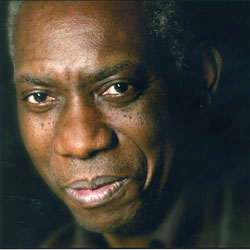I am a scrappy old lion
who’s wandered into a Christian square
quavering with centuries of forged bells.
The cobblestones make my feet ache.
I walk big-shouldered, my head raised
proudly. I smell the blood of a king.
The citizens can only see a minotaur in a maze.
I know more than a lion should know.
My roar goes back to the Serengeti,
to when a savannah was craggy ice,
but now it only frightens pigeons from a city stoop.
They believe they know my brain’s contours & grammar.
Don’t ask me how I know the signs engraved
on a sundial, the secret icons behind a gaze.
I wish their crimes hadn’t followed me here.
I can hear their applause in the dusty citadel.
I know what it took to master the serpent
& wheel, the crossbow & spinal tap.
Once, I was a leopard beside a stone gate.
I am a riddle to be unraveled. I am not
& I am. When their eyes are on me
I become whatever is judged badly.
I circle the park. Hunger shapes
my keen sense of smell, a lifetime ahead.
They will follow my paw prints
till they’re lost in snow at dusk.
If I walk in circles, I hide from my shadow.
They plot stars to know where to find me.
I am a prodigal bird perched on the peak
of a guardhouse. I have a message
for Fate. The sunlight has shown me
the guns, & their beautiful sons are deadly.
Notes on the Poem
How does the layout of words, phrases and sentences in this poem - Yusef Komunyakaa's "When Eyes Are on Me" from his 2012 Griffin Poetry Prize shortlisted collection "The Chameleon Couch" - affect how the poem unfolds sonically? That sonic effect can be how the poem "sounds" as you're reading it to yourself, or it can inform how the poem is actually read aloud. Let's take a look ... and a listen. The Poetry Archive offers some excellent insights into how lines in a poem are constructed and laid out for different purposes and effects. As they explain, "A line is a subdivision of a poem, specifically a group of words arranged into a row that ends for a reason other than the right-hand margin ... it is important to remember that the poet has chosen to make the line a certain length, or to make the line-break at a certain point." Komunyakaa has clearly intended to turn the lines of this poem at specific points. The fairly consistent line length and meter or rhythmic structure achieves a stately pace, befitting the subject matter: the lion, king of the beasts. Isn't it interesting, then, how that tone of majesty is then undermined or ruefully diminished by such observations about the lion's roar: "but now it only frightens pigeons from a city stoop." The most intriguing use of line breaks in the poem is perhaps this: "I am a riddle to be unraveled. I am not & I am." ... where not one but two line breaks add a particularly dramatic pause, adding to the subject's mystique. The Griffin Trust For Excellence In Poetry was privileged to welcome Yusef Komunyakaa for the 2012 shortlist readings, during which he presented this poem as one of his selections. You can hear him read "When Eyes Are on Me" here (at the 23:06 mark) ... and you can follow the text to see how he conveys the structure of the poem on the page with his voice.
